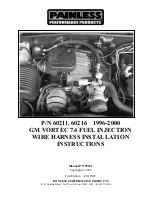
Checking tire pressures manually
#
Read the tire pressure for the current operat‐
ing conditions from the Tire and Loading
Information placard or the tire pressure
table. Observe the notes on tire pressure.
#
Remove the valve cap of the tire to be
checked.
#
Press the tire pressure gauge securely onto
the valve.
#
Read the tire pressure.
#
If the tire pressure is lower than the recom‐
mended value, increase the tire pressure to
the recommended value.
#
If the tire pressure is higher than the recom‐
mended value, release air. To do so, press
down the metal pin in the valve, e.g. using
the tip of a pen, for example. Then check the
tire pressure again using the tire pressure
gauge.
#
Screw the valve cap onto the valve.
Further related subjects:
R
Notes on tire pressure (
/
page 307)
R
Tire pressure table (
/
page 309)
R
Tire and Loading Information placard
(
/
page 312)
Tire pressure monitoring system
Function of the tire pressure monitoring sys‐
tem
&
DANGER Risk of accident due to incor‐
rect tire pressure
Each tire, including the spare (if provided),
should be checked monthly when cold and
then inflated to the inflation pressure recom‐
mended by the vehicle manufacturer on the
vehicle placard or tire inflation pressure
label. (If your vehicle has tires of a different
size than the size indicated on the vehicle
placard or tire inflation pressure label, you
should determine the proper tire inflation
pressure for these tires.)
As an added safety feature, your vehicle has
been equipped with a tire pressure monitor‐
ing system (TPMS) that illuminates a low tire
pressure telltale when one or more of your
tires is significantly underinflated. Accord‐
ingly, if the low tire pressure telltale illumi‐
nates, you should stop and check your tires
as soon as possible, and inflate them to the
proper pressure. Driving on a significantly
underinflated tire causes the tire to overheat
and can lead to tire failure. Underinflation
also reduces fuel efficiency and tire tread
life, and may affect the vehicle's handling
and stopping ability. Please note that the
TPMS is not a substitute for proper tire main‐
tenance, and it is the driver's responsibility
to maintain correct tire pressure, even if
underinflation has not reached the level to
trigger illumination of the TPMS low tire pres‐
sure telltale.
Your vehicle has also been equipped with a
TPMS malfunction indicator to indicate when
the system is not operating properly. The
TPMS malfunction indicator is combined with
the low tire pressure telltale. When the sys‐
tem detects a malfunction, the indicator
lamp will flash for approximately a minute
310 Wheels and tires
Summary of Contents for AMG GT
Page 8: ...Left hand drive vehicles 6 At a glance Cockpit ...
Page 11: ......
Page 12: ...Instrument Display 10 At a glance Indicator and warning lamps ...
Page 15: ......
Page 16: ...14 At a glance Overhead control panel ...
Page 18: ...16 At a glance Door operating unit and seat adjustment ...
Page 20: ...18 At a glance Emergencies and breakdowns ...
Page 119: ... Remove the floor mat Seats and stowing 117 ...
Page 448: ......
Page 449: ......
Page 450: ......
















































